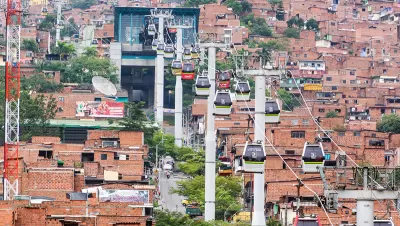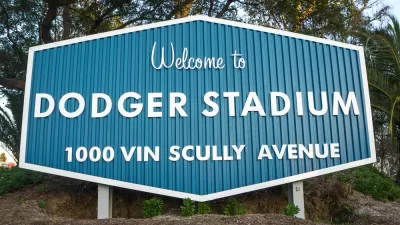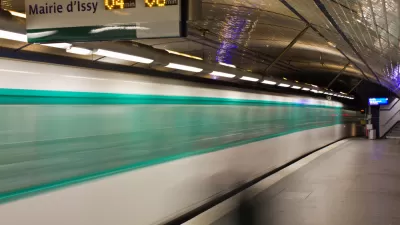An aerial tramway project in the French capital cleared feasibility studies and could open in 2025.

As Feargus O'Sullivan reports, the French capital could soon begin construction on the city's first aerial tramway, a 2.8-mile line serving five stations between Paris's southeastern suburbs and the terminus of Metro like 8. The gondola, known as Cable A, cleared pre-construction feasibility studies last week and is expected to cost less and be less disruptive than land-based rail projects, which "would require extensive engineering in the form of bridges and tunnels" to navigate the area's complex web of hills, highways, and existing rail lines.
"The gondola, by contrast, can sail above these obstacles, and its land needs are minimal: Beyond station sites, an aerial tramway just requires space for the pillars supporting the cables. That should keep the project’s cost at 132 million euros ($149 million)." The all-electric conveyance will also help reduce carbon emissions and, officials hope, reduce the need for private cars.
"The gondola has faced resistance from locals near its planned path, who fear that their privacy will be compromised by gondola-borne passengers peering down into their yards and windows, and their peace disturbed by noise and light." A proposed solution would obscur the tram's windows when passing near homes.
The city has tentative plans for five additional aerial trams in the Greater Paris region. According to O'Sullivan, the trams could become useful last-mile solutions connecting Paris's residents and its other forms of transit.
FULL STORY: Paris’s First Gondola Finally Gets a Green Light

Alabama: Trump Terminates Settlements for Black Communities Harmed By Raw Sewage
Trump deemed the landmark civil rights agreement “illegal DEI and environmental justice policy.”

Planetizen Federal Action Tracker
A weekly monitor of how Trump’s orders and actions are impacting planners and planning in America.

Why Should We Subsidize Public Transportation?
Many public transit agencies face financial stress due to rising costs, declining fare revenue, and declining subsidies. Transit advocates must provide a strong business case for increasing public transit funding.

Understanding Road Diets
An explainer from Momentum highlights the advantages of reducing vehicle lanes in favor of more bike, transit, and pedestrian infrastructure.

New California Law Regulates Warehouse Pollution
A new law tightens building and emissions regulations for large distribution warehouses to mitigate air pollution and traffic in surrounding communities.

Phoenix Announces Opening Date for Light Rail Extension
The South Central extension will connect South Phoenix to downtown and other major hubs starting on June 7.
Urban Design for Planners 1: Software Tools
This six-course series explores essential urban design concepts using open source software and equips planners with the tools they need to participate fully in the urban design process.
Planning for Universal Design
Learn the tools for implementing Universal Design in planning regulations.
Caltrans
Smith Gee Studio
Institute for Housing and Urban Development Studies (IHS)
City of Grandview
Harvard GSD Executive Education
Toledo-Lucas County Plan Commissions
Salt Lake City
NYU Wagner Graduate School of Public Service





























